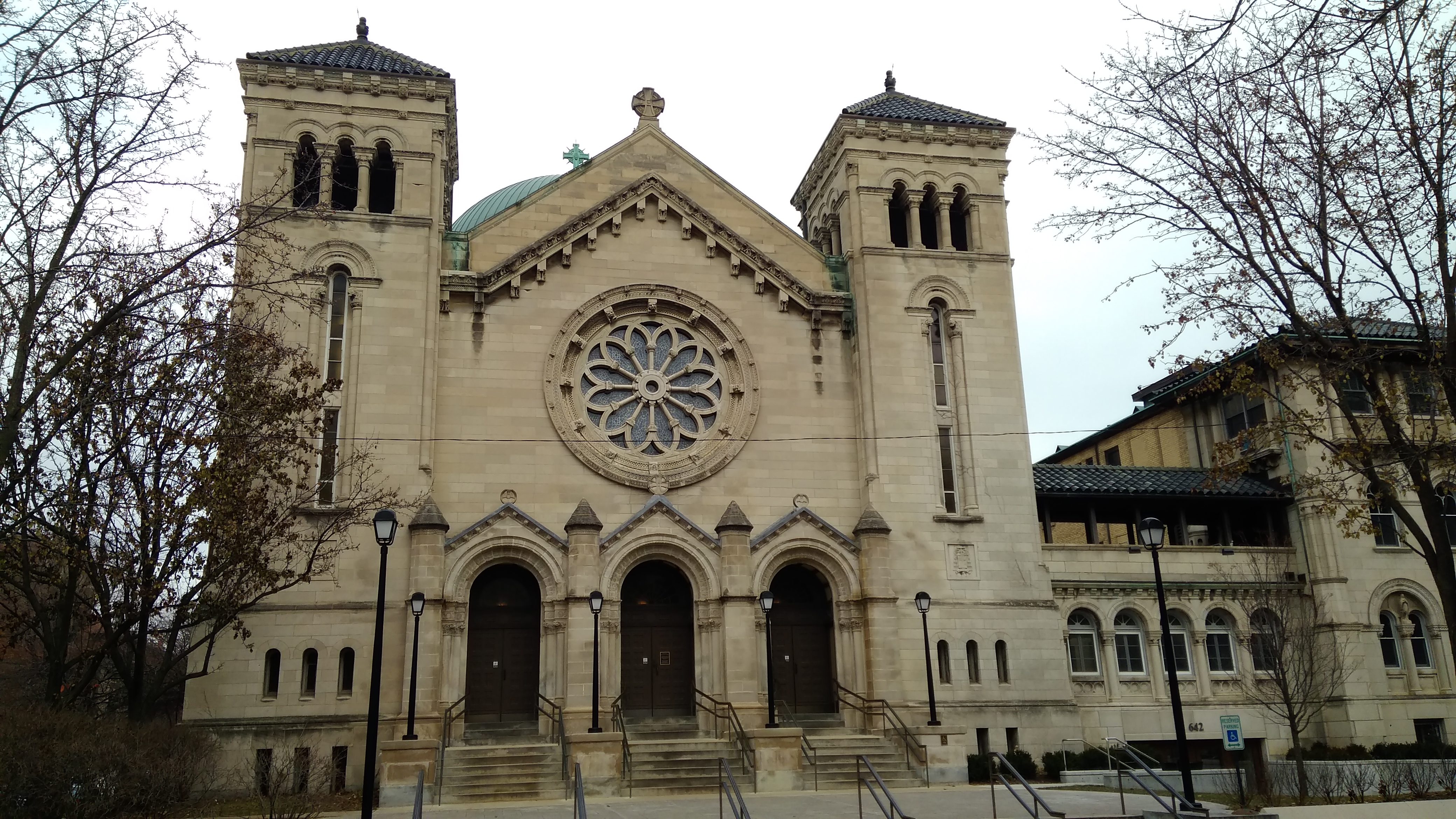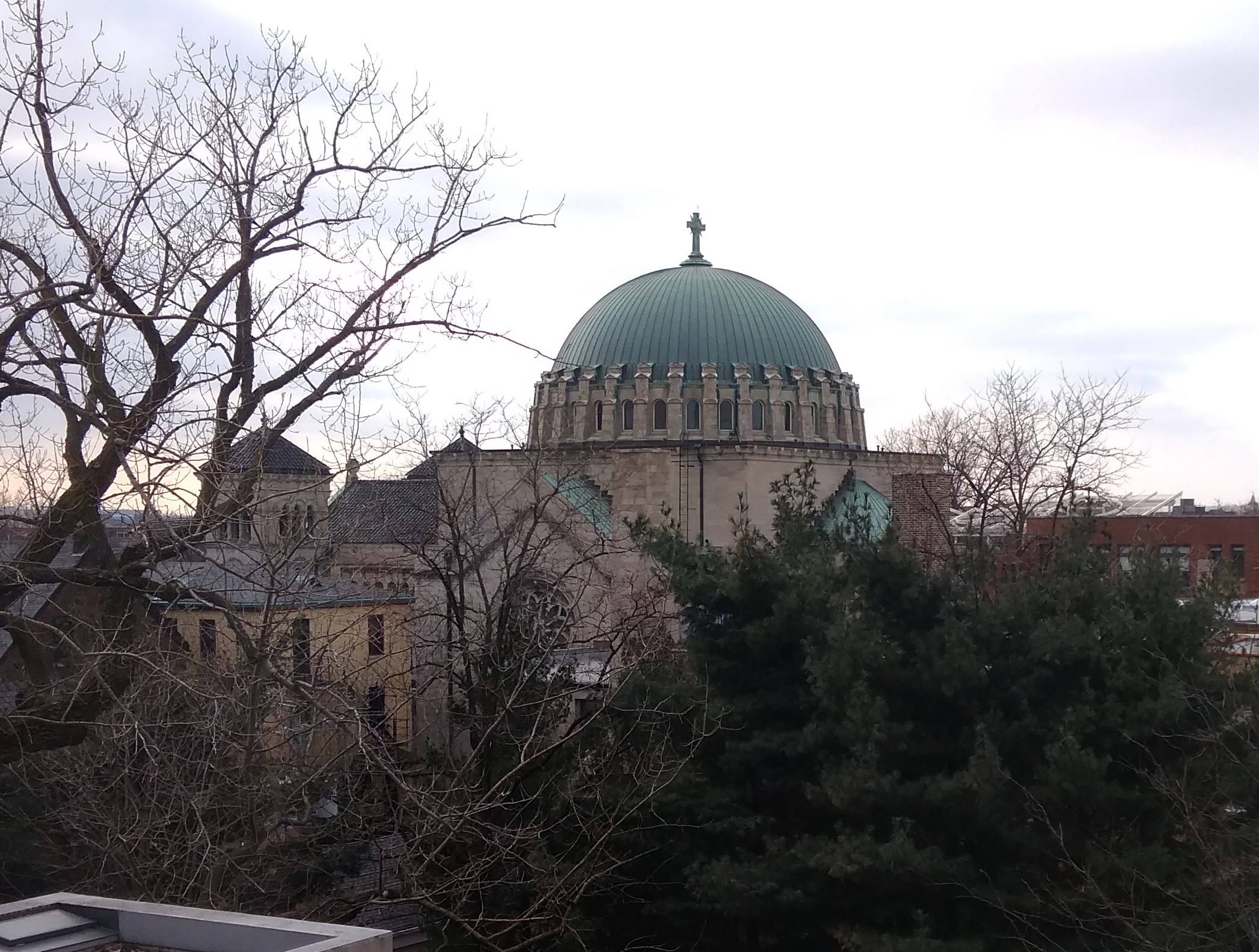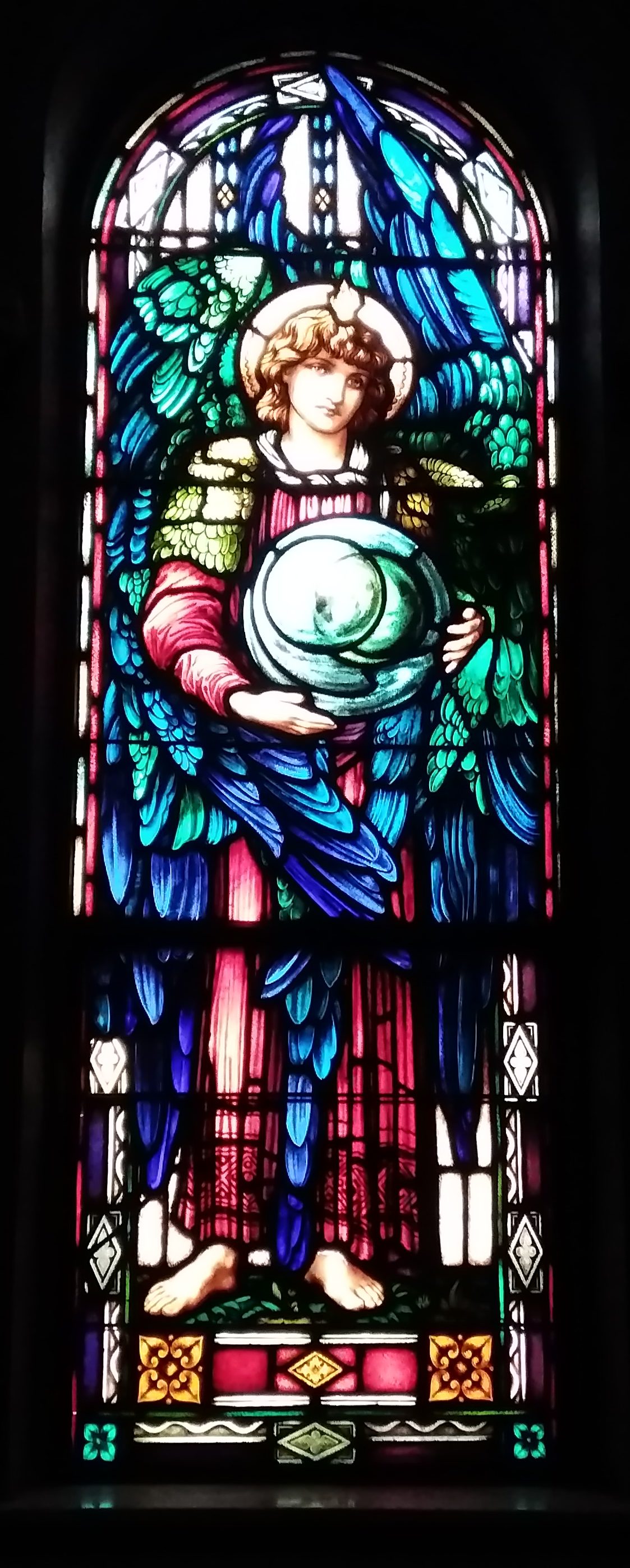At noon on Saturday, we’d just emerged onto the street in the Lincoln Park neighborhood of Chicago when we heard church bells nearby. A robust peeling that commanded our attention.
We soon figured out that they were the bells of Saint Clement. What do the bells of Saint Clement say? Oranges and lemons. A different church, but never mind. I might not know that if I’d never read 1984, but what kind of person would I be if I’d never read 1984?
Naturally, I wanted to see if the church was open. The bells gave us extra incentive to take a look. Saint Clement is at N. Orchard St. and W. Deming Pl.
 Not long before, we’d seen the striking dome of the church from a fourth-floor view, more about which later.
Not long before, we’d seen the striking dome of the church from a fourth-floor view, more about which later.
 Saint Clement in Chicago is 100 years old, originally built by German Catholics. St. Louis architect Thomas Barnett designed the church. He also did the Byzantine-style Cathedral Basilica of St. Louis, and Saint Clement reminded me of that place of worship, though without the mosaics.
Saint Clement in Chicago is 100 years old, originally built by German Catholics. St. Louis architect Thomas Barnett designed the church. He also did the Byzantine-style Cathedral Basilica of St. Louis, and Saint Clement reminded me of that place of worship, though without the mosaics.
The interior was dark when we visited. It must be expensive to light such a large place. Besides, I imagine that most large churches in most places during all the pre-electric centuries were dark most of the time. Here are some pics with all the electric light blazing and it must be quite a sight. But even dark, the place was impressive (and it would be fine to see it lighted by candle).
On an overcast day, the stained glass was well illuminated.
 Of course I had to look up St. Clement. I might have learned about him in passing in New Testament class, but that was a good many years ago. Anyway, he was the fourth bishop of Rome and, according to legend, found martyrdom ca. AD 101 in a distinctive way: tossed into the Black Sea tied to an anchor.
Of course I had to look up St. Clement. I might have learned about him in passing in New Testament class, but that was a good many years ago. Anyway, he was the fourth bishop of Rome and, according to legend, found martyrdom ca. AD 101 in a distinctive way: tossed into the Black Sea tied to an anchor.
That would account for the anchor motif I saw on the exterior of Saint Clement School, which is across the street from the church. If I’d had a bit more light, I might have found that in the church as well.